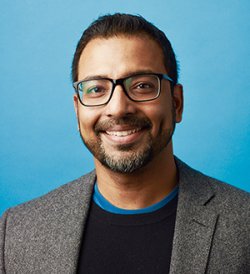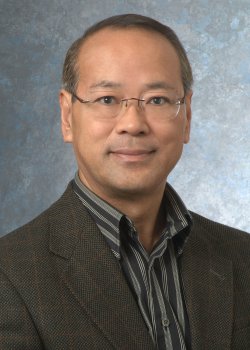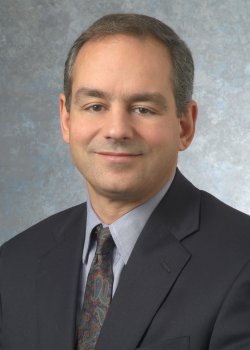National Academy of Inventors names seven Case Western Reserve University researchers to 2024 class of senior members

The National Academy of Inventors (NAI) has named seven Case Western Reserve University researchers to its 2024 class of senior members, an honor that recognizes their “remarkable innovation-producing technologies that have brought, or aspire to bring, real impact on the welfare of society.”
Named NAI senior members were: Abhinav Acharya, James Basilion, Agata Exner, Hatsuo Ishida, Anirban Sen Gupta, Tina Vrabec and David Wilson.
“Translating scientific discovery into entrepreneurial invention is the goal of America’s research and development investment,” said Michael Oakes, senior vice president for research and technology management at Case Western Reserve. “The NAI announcement is recognition of these extraordinary faculty for their achievements in this work.”
NAI senior members are “active faculty, scientists and administrators from NAI-member institutions who have demonstrated They also have growing success in patents, licensing and commercialization, while educating and mentoring the next generation of inventors.”
This year’s class of NAI senior members is the largest to date and hails from 60 NAI- member institutions nationally. Collectively, they are named inventors on more than 1,000 U.S. patents, with 344 of those being licensed technologies and commercialized products.
The 2024 class of senior members will be celebrated at NAI’s annual conference June 16-18 in Raleigh, North Carolina.
CWRU’s new NAI senior members
Abhinav Acharya is an assistant professor of biomedical engineering at Case School of Engineering and a member of the Case Comprehensive Cancer Center. His research focuses on immunoengineering, biomaterials and drug delivery—especially using biomaterials as tools to engineer the immune system and modulate the metabolism and function of immune cells to affect diseases. His team works on resolving autoimmune diseases, such as rheumatoid arthritis, multiple sclerosis, melanoma and other cancers and inflammation-associated pathologies, such as traumatic brain injury.
James Basilion joined the faculties of the School of Medicine and Case School of Engineering in September 2005 after a post-doctoral fellowship at the National Institutes of Health and a brief career with a biotech startup. He is a professor in the departments of radiology and biomedical engineering and co-director of the Cancer Imaging Program at the Case Comprehensive Cancer Center. Basilion has founded two companies devoted to the development of fluorescence-image-guided surgery for cancers, has published more than 100 peer-reviewed studies and holds more than 50 patents.
Agata Exner, director of CWRU’s Center for Imaging Research, is the Henry Willson Payne Professor and vice chair of basic research in the Department of Radiology; she also holds an adjunct appointment in the Department of Physics at Toronto Metropolitan University. Innovation is at the core of Exner’s research approach to developing targeted therapies and improving cancer detection. A globally acclaimed expert in molecular imaging and theranostics, Exner’s research—spanning nanomedicine and biomedical ultrasound—is dedicated to advancing novel platform technologies for molecular imaging and image-guided drug delivery.
Hatsuo Ishida, the Peter A. Asseff, PhD, Professor of Organic Chemistry, is a professor of macromolecular science and engineering at the Case School of Engineering. He is an Inaugural Faculty Distinguished Research Professor who holds an Honorary Doctorate of Chulalongkorn University and is ST Engineering Distinguished Professor for Advanced Materials. Ishida has pioneered—and is considered a global leader in—two fields: composite interfaces and development of benzoxazine resins. He has published more than 530 peer-reviewed journal articles and 12 books and holds 39 patents and an h-index of 107.
Anirban Sen Gupta is a professor in the Department of Biomedical Engineering at Case School of Engineering and School of Medicine and a member of the Cancer Imaging Program at the Case Comprehensive Cancer Center. His research focus is drug delivery and nanomedicine—especially understanding the complex pathophysiological mechanisms of cardiovascular diseases and cancer. His lab team’s goal: developing disease-targeted therapeutic strategies by integrating critical physical, chemical and biological components at nano-to-micro scales.
Tina Vrabec is an assistant research professor in the Department of Physical Medicine and Rehabilitation at Case Western Reserve School of Medicine and MetroHealth Medical Center. Her research has focused on the development of waveforms and electrodes for the application of electrical nerve block and integrating it with other electrical and non-electrical methods to control the nervous system. Her work includes applying high-frequency and direct-current nerve block to treat cardiac arrhythmia. Several product development efforts are underway, including a Small Business Technology Transfer-funded project to develop a direct current nerve-block device as well as an open-source device for high-frequency block under the Human Open Research Neural Engineering Technologies funding mechanisms.
David Wilson is the Robert Herbold Professor of Biomedical Engineering and Radiology at Case School of Engineering and School of Medicine. He is a prolific inventor and author, with more than 400 published peer-reviewed research papers. Wilson has led the creation of commercialized cryo-imaging, which allows fluorescence and color microscopic-imaging of small things in large samples—identifying fluorescent stem cells throughout a mouse, for example—and 3D-MUSE microscopy imaging, which is especially useful for imaging long peripheral nerves. More recently, he has been using artificial intelligence to improve the analysis of computed tomography (CT) scans for early screening of cardiovascular diseases.




